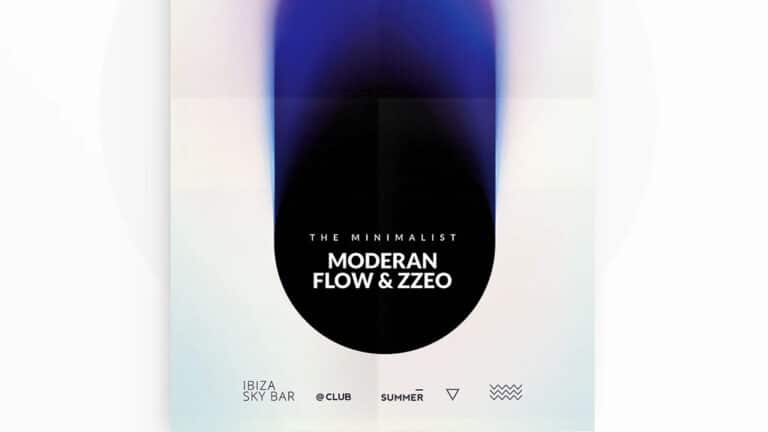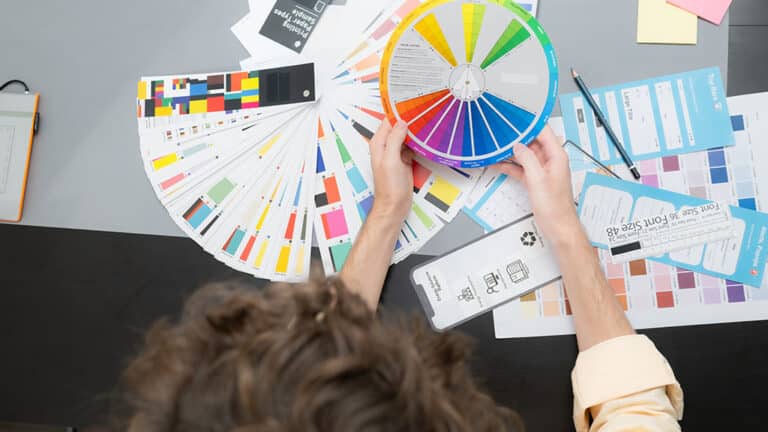Why Consistency in Graphic Design Builds Trust
When a potential customer encounters your brand for the first time—whether it’s through your website, social media, or product packaging—their brain is subconsciously asking one question: can I trust this? One of the fastest ways to answer “yes” is through consistent design. In a world overloaded with brands competing for attention, consumers rely on visual cues to decide who to engage with, who to believe, and ultimately, who to buy from.
Consistency in design signals that your brand is professional, established, and intentional. It’s not just about using the same logo or color scheme—it’s about creating a unified experience across every interaction. When all of your visual elements work together seamlessly, you build a recognizable and reliable presence. That presence builds trust.
Inconsistent visuals, on the other hand, raise red flags. If your Instagram looks fun and modern but your website feels dated and clunky, it creates confusion. And confusion is the enemy of trust. That’s why brands that invest in cohesive visuals tend to see stronger loyalty, better conversion rates, and a more confident audience. If you’re struggling to align your brand visually, professional support—such as custom graphic design services—can help bring clarity and consistency to everything you put into the world.
Repetition Reinforces Recognition
One of the most powerful outcomes of visual consistency is recognition. The more a customer sees the same fonts, colors, layouts, and logo treatments, the faster they learn to associate those elements with your brand. This process of recognition builds mental shortcuts—familiar symbols that quickly tell someone, “this is a brand I know.”
Think about how instantly recognizable certain brands are just from their visuals alone. A red can with cursive lettering signals Coca-Cola. A swoosh means Nike. A simple apple shape points to one of the most iconic tech brands in the world. These associations didn’t happen overnight. They were built through repeated, consistent exposure over time.
Even smaller businesses can benefit from this effect. If your email header matches your Instagram story template, which echoes your website banner, it reinforces brand memory. That repetition makes your brand easier to recall—and brands that are easy to recall are more likely to be chosen when a customer is ready to buy.
Repetition doesn’t mean being boring. It means being intentional. When your design language is repeated thoughtfully across different platforms, it forms a solid foundation for customer trust. It shows you’re not just throwing things together—you’re building something worth remembering.
Visual Alignment Reflects Professionalism
Customers judge brands quickly—and harshly—based on appearances. It’s not superficial; it’s psychological. When people see that your visual identity is aligned and polished, they instinctively assume your business is too. Clean, consistent design communicates professionalism in a way that words alone never could.
This alignment means more than having the same logo on every page. It includes the use of whitespace, the structure of your layouts, the tone of your imagery, and even the placement of your call-to-action buttons. When all of these details are considered and cohesive, they give off a sense of control and expertise.
The opposite is also true. If your branding looks like a patchwork of styles—different fonts here, clashing color palettes there—it sends a signal that your business might be disorganized or inexperienced. Even if your product or service is excellent, that visual inconsistency can create hesitation. It introduces doubt when your goal should be to build confidence.
When a customer lands on your homepage or opens a branded brochure, the design should feel like it belongs to the same family. That consistency makes your brand appear thoughtful, trustworthy, and professional—key qualities that influence whether someone decides to do business with you.
Consistent Branding Reduces Confusion
Inconsistent branding sends mixed messages. If your visual identity changes from one platform to another—like using a different color palette on your packaging than you do on your website—it can confuse your audience and create uncertainty about who you are as a brand. And in the eyes of a consumer, confusion leads to hesitation.
When people encounter conflicting visuals, they may wonder if they’re dealing with the same company. This is especially damaging when it comes to credibility. Consumers are naturally skeptical online, and any signs of disorganization or disjointed branding can erode trust before they even read your copy or explore your offerings. Even something as simple as inconsistent font choices or logo sizing can lead to doubt about your brand’s reliability.
On the flip side, visual consistency across all channels gives customers a sense of familiarity. It makes the brand experience smoother and more intuitive, reinforcing the feeling that they’re in the right place. Whether they’re seeing an Instagram ad, browsing your website, or receiving a printed postcard in the mail, the design should reassure them that they’re interacting with the same trusted brand.
Consistency reduces the mental friction of trying to figure out who you are or what you offer. It eliminates unnecessary questions and allows the customer to focus on the value you provide. In a world where people are bombarded with information, clarity is comforting—and consistency is one of the most effective ways to deliver it.
Cohesive Design Creates a Unified Brand Voice
Your brand voice isn’t just about the words you use—it’s also communicated visually. The style, tone, and personality of your brand should be reflected in your colors, typography, imagery, and layout choices. When those design elements work together cohesively, they create a unified brand voice that feels confident and intentional.
For example, a bold, youthful brand might use bright colors, playful typography, and quirky illustrations to convey energy and creativity. A high-end luxury brand, on the other hand, might lean on muted tones, elegant fonts, and minimalistic layouts to signal sophistication and exclusivity. The key is to choose a design style that aligns with your brand values and then apply it consistently across all touchpoints.
When your visuals match your verbal messaging, it strengthens your overall communication. Consumers can more easily understand who you are and what you stand for because your design reinforces your story. It becomes easier for them to emotionally connect with your brand because everything feels aligned.
A disjointed visual identity can create the opposite effect. If your brand voice is calm and nurturing but your visuals are loud and chaotic, it creates tension. That mismatch can confuse your audience or make your brand seem inauthentic. But when everything is cohesive, your message is clearer, your identity is stronger, and your brand feels more trustworthy.
Builds Confidence in Online Interactions
Online interactions are where most consumers form their first impressions—and where trust is tested the most. Unlike face-to-face business, digital experiences don’t offer a human touch. Instead, people rely on visual and functional cues to determine whether a website or online ad feels legitimate. That’s where consistent graphic design becomes a major factor in building confidence.
A cohesive, visually aligned website makes visitors feel like they’re in good hands. They’re more likely to explore, scroll, click, and convert when the design feels organized and intentional. Simple things like matching buttons, consistent navigation, and brand colors used appropriately can make a big difference in how people perceive your credibility.
On social media, consistency helps maintain a strong presence even in fast-moving feeds. When your posts follow a visual system—same filters, typography, graphic templates—your brand becomes easier to identify and engage with. That recognition turns into trust, especially when people are seeing you repeatedly and your message is always clear and on-brand.
In email marketing, consistency helps users feel secure clicking through to your site. If the visuals in the email match your landing page, it reassures the user that they’re in the right place and not being misled. That seamless experience makes your brand feel more legitimate and trustworthy.
Online spaces are where skepticism is highest. Consistent, professional design helps overcome that skepticism and makes people feel more confident choosing to interact with and buy from your brand.
Strengthens Perception of Brand Stability
When a brand maintains a consistent visual identity over time, it sends a powerful message: we’re reliable, established, and here to stay. Visual consistency gives the impression of longevity and intentionality—even if your company is relatively new. It suggests that your business has invested in itself, cares about the customer experience, and takes its reputation seriously.
This perceived stability is a major factor in earning trust. People are more likely to spend money with companies they believe will be around to support them tomorrow. Inconsistent or constantly changing visuals can send the opposite message. If your logo changes every month, or your brand colors swing wildly from one season to the next, it may signal that your brand is still trying to figure itself out. That uncertainty can make customers hesitate, especially when their purchase carries long-term value or risk.
Consistency over time also creates a track record of reliability. When customers repeatedly encounter the same branding across campaigns, seasons, and years, it fosters confidence. They begin to associate your visuals with dependable service, quality products, and positive experiences. And that’s the kind of brand loyalty that leads to referrals, repeat business, and long-term growth.
In short, visual consistency becomes part of your brand’s legacy. It reinforces the idea that you’re not a flash in the pan—you’re a trustworthy presence in the market with a clear identity and long-term vision.
Enhances the Customer Journey
The customer journey is made up of many touchpoints—ads, social media posts, website pages, emails, packaging, and more. When these touchpoints are visually and emotionally consistent, they create a seamless experience that puts the customer at ease. Instead of being distracted by changes in style or branding, they’re free to focus on what matters: your message, your offer, and how you can help them.
Each part of the journey should feel like a continuation of the last. A Facebook ad should lead to a landing page that looks and feels connected. The confirmation email should reflect the same tone and visual style as your website. The packaging they receive should mirror the brand they first encountered on Instagram. This alignment creates a frictionless path from discovery to conversion—and beyond.
When visual consistency is missing, the journey becomes disjointed. Customers may wonder if they’ve landed on the wrong website or if they’ve clicked on a fraudulent link. These breaks in the experience disrupt trust and may cause them to drop off altogether.
But when every step is visually aligned, customers feel reassured. They don’t have to reorient themselves or second-guess their decision. They trust that they’re in the right place, dealing with the right brand. This comfort leads to smoother conversions, greater satisfaction, and a stronger overall impression of your business.
Supports Loyalty and Long-Term Relationships
Brand loyalty is built on emotional connection, consistent experiences, and reliability. Visual design plays a huge role in nurturing all three. When your audience repeatedly encounters your brand and it looks, feels, and behaves in the same way each time, it begins to feel familiar. And familiarity breeds comfort and trust.
This consistency strengthens the emotional connection between brand and customer. Over time, people come to associate your visuals with positive feelings: satisfaction, excitement, dependability, pride. They begin to see your brand not just as a provider of products or services, but as something they identify with. This is especially important for lifestyle, wellness, and mission-driven brands, where emotional resonance drives much of the purchasing behavior.
When customers feel this connection, they’re more likely to return—and to recommend your brand to others. Every time they interact with your consistent branding, it reinforces the relationship. They know what to expect, and that predictability makes them feel secure. It’s the same psychological principle that makes people return to their favorite restaurant or clothing store: it’s reliable, it feels good, and it delivers on its promise.
Inconsistent visuals, by contrast, can create emotional distance. If your branding feels unstable or changes dramatically with every campaign, customers may feel unsure or disconnected. But when your visual identity is consistent and true to your brand, it lays the foundation for long-term loyalty.
Conclusion: Consistency Isn’t Repetition, It’s Reliability
When people hear the word “consistency” in design, they sometimes assume it means being repetitive or boring. But in reality, consistency is about dependability. It’s about showing up the same way—visually, emotionally, and professionally—so that your audience knows exactly who you are, what you stand for, and what to expect.
That dependability is what builds trust. Consumers are constantly evaluating whether a brand feels authentic, capable, and stable. When your design is cohesive across every touchpoint—from your website and social media to your packaging and marketing materials—you signal that your business is serious, thoughtful, and reliable. You reduce confusion, strengthen emotional connections, and create a seamless experience that makes it easier for people to say “yes.”
Consistency doesn’t mean never evolving. Brands can grow, adapt, and refresh their visuals without losing their identity. The key is to do it with intention—so that even as you change, your audience still feels that familiar sense of connection.
At the end of the day, design isn’t just about how your brand looks. It’s about how it makes people feel. And when your visuals consistently support the experience you promise, they turn casual visitors into loyal customers—and loyal customers into long-term advocates.

















